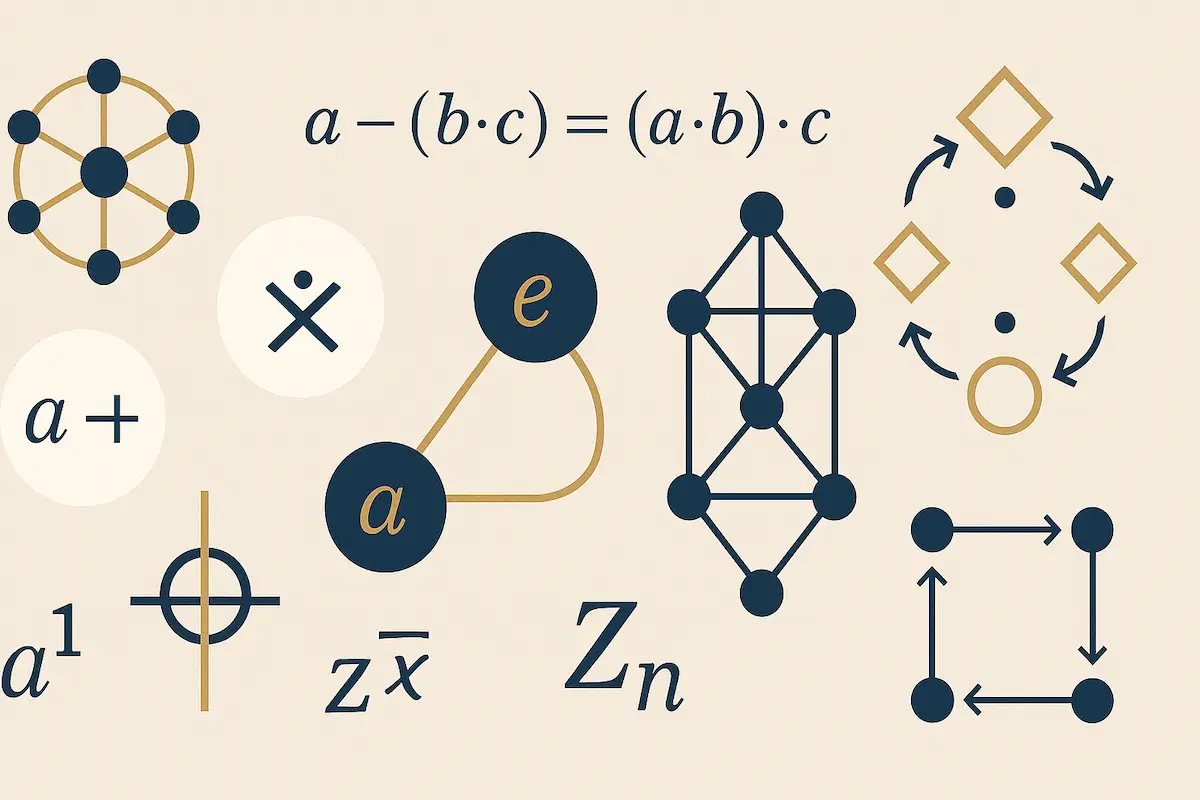It is useful, when reading the below, to have a background knowledge of Set Theory.
A Group is an algebraic structure that has a single law of composition on a set. A law of composition takes two elements from the set and maps these to a third element.
Definition: Let ![]() is a set then a law of composition
is a set then a law of composition ![]() is defined as:
is defined as:
![]()
By reference to set theory the is a map of ![]() to
to ![]() .
.
To be a Group, the law of composition ![]() must, for all elements
must, for all elements ![]() and
and ![]() , map these to an element
, map these to an element ![]() in the same Group. If it does this, then
in the same Group. If it does this, then ![]() is said to be closed.
is said to be closed.
There are a few other requirements for a set with a law of composition to form a Group.
Definition: Identity element ![]() . Let
. Let ![]() be a set and
be a set and ![]() a law of composition.
a law of composition.
![]()
Definition: Inverse element ![]() . Let
. Let ![]() be a set and
be a set and ![]() a law of composition.
a law of composition.
![]()
Definition: The composition law is associative. Let ![]() be a set.
be a set.
![]()
If we have a set with a law of composition that is closed and for which an identity element exists, each element has an inverse and the law is associative then we have a Group.
Proof:
Let ![]() and
and ![]() . Let
. Let ![]() be a law of composition on the Group
be a law of composition on the Group ![]() .
.
By the definition of the identity element:
![]() where
where ![]() is the right identity but
is the right identity but
![]() where
where ![]() is the left identity
is the left identity ![]()
![]()
Proof:
Let ![]()
![]()
![]()
![]()
If the composition ![]() is commutative on the set
is commutative on the set ![]() , that is
, that is ![]() then the Group is said be abelian.
then the Group is said be abelian.
A common Group is that of the set of integers ![]() under addition
under addition ![]() . In this Group, the identity element
. In this Group, the identity element ![]() . That is
. That is ![]() . The inverse element for
. The inverse element for ![]() . This is verified by
. This is verified by ![]() which is indeed defined as the identity element.
which is indeed defined as the identity element.
The set ![]() is not a Group under the law of multiplication
is not a Group under the law of multiplication ![]() . Whilst there is an identity element
. Whilst there is an identity element ![]() such that
such that ![]() there is no inverse in the Group as for example,
there is no inverse in the Group as for example, ![]() is not an element of
is not an element of ![]() .
.
Further, if we have the set of all real numbers ![]() then this is not a Group under multiplication. This is because
then this is not a Group under multiplication. This is because ![]() is an element of the real numbers and there is no inverse element for
is an element of the real numbers and there is no inverse element for ![]() . If we exclude
. If we exclude ![]() from the set
from the set ![]() then the
then the ![]() is a group under multiplication with an identity element of
is a group under multiplication with an identity element of ![]() and an inverse for
and an inverse for ![]() of
of ![]() .
.
Since Group structures allow solutions to equations, the lack of an inverse element under multiplication to the real numbers explains why the ‘high school’ bad practice of solving equations leads to a contradiction. ![]() , cancel the
, cancel the ![]() and we are left with
and we are left with ![]() . This is a contradiction because we do not ‘cancel’ anything. The correct way to solve this equation is to apply the inverse of
. This is a contradiction because we do not ‘cancel’ anything. The correct way to solve this equation is to apply the inverse of ![]() to both sides so that this
to both sides so that this ![]() and its inverse equals the identity element. The problem is, the inverse of
and its inverse equals the identity element. The problem is, the inverse of ![]() is not defined and so the equation cannot be solved. Put simply, you cannot divide through by
is not defined and so the equation cannot be solved. Put simply, you cannot divide through by ![]() !.
!.

